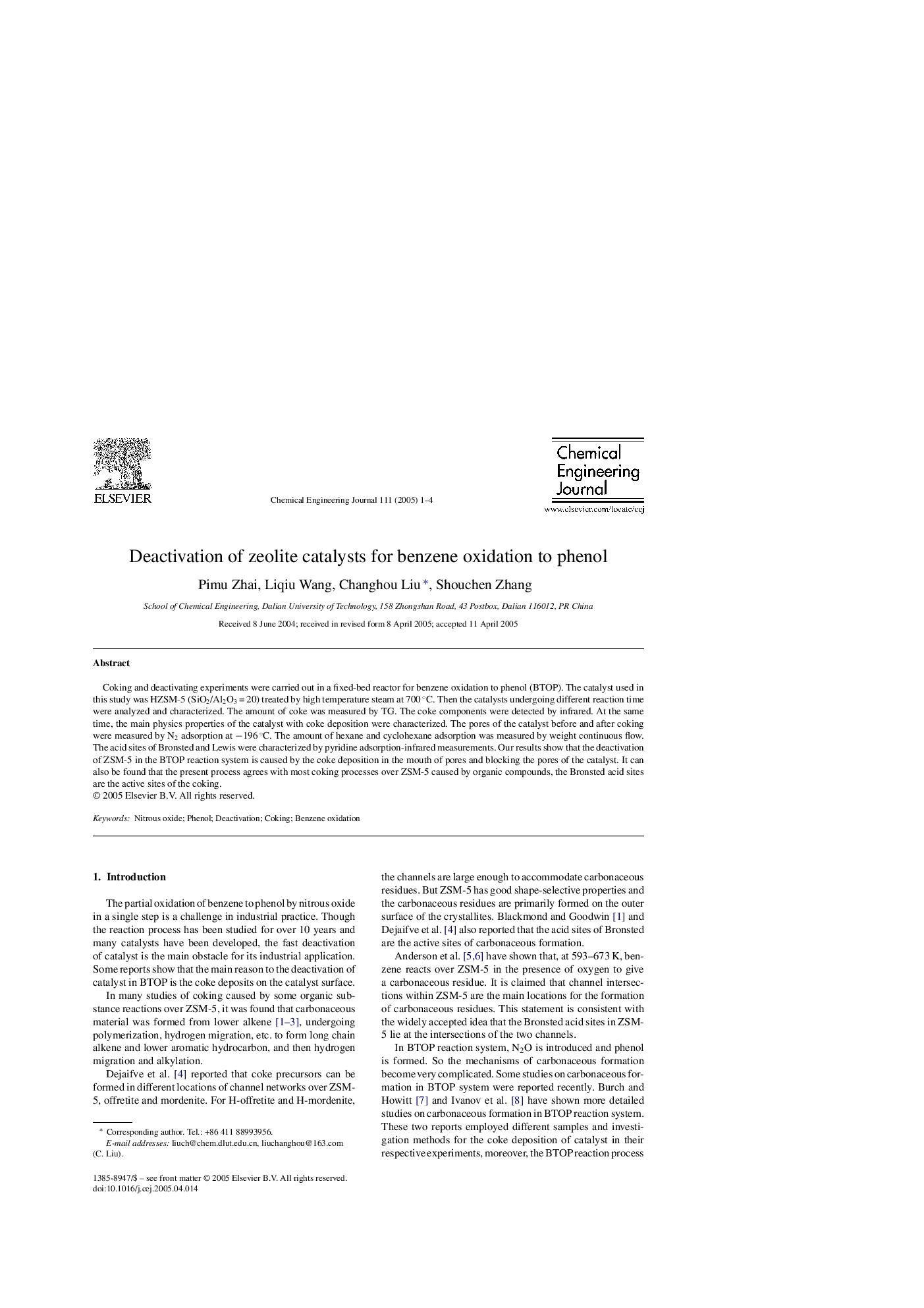| Article ID | Journal | Published Year | Pages | File Type |
|---|---|---|---|---|
| 10260983 | Chemical Engineering Journal | 2005 | 4 Pages |
Abstract
Coking and deactivating experiments were carried out in a fixed-bed reactor for benzene oxidation to phenol (BTOP). The catalyst used in this study was HZSM-5 (SiO2/Al2O3 = 20) treated by high temperature steam at 700 °C. Then the catalysts undergoing different reaction time were analyzed and characterized. The amount of coke was measured by TG. The coke components were detected by infrared. At the same time, the main physics properties of the catalyst with coke deposition were characterized. The pores of the catalyst before and after coking were measured by N2 adsorption at â196 °C. The amount of hexane and cyclohexane adsorption was measured by weight continuous flow. The acid sites of Bronsted and Lewis were characterized by pyridine adsorption-infrared measurements. Our results show that the deactivation of ZSM-5 in the BTOP reaction system is caused by the coke deposition in the mouth of pores and blocking the pores of the catalyst. It can also be found that the present process agrees with most coking processes over ZSM-5 caused by organic compounds, the Bronsted acid sites are the active sites of the coking.
Related Topics
Physical Sciences and Engineering
Chemical Engineering
Chemical Engineering (General)
Authors
Pimu Zhai, Liqiu Wang, Changhou Liu, Shouchen Zhang,
